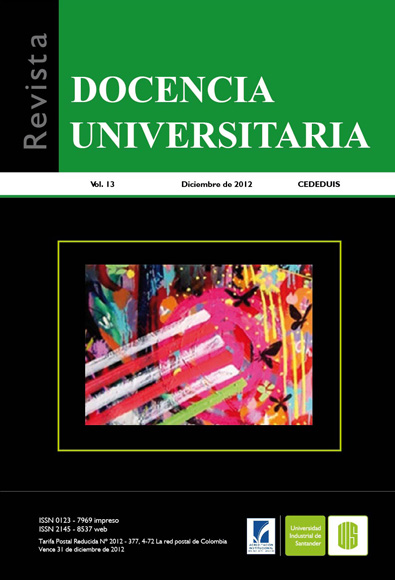EL ESTUDIANTE TUTOR COMO ACTOR IMPORTANTE EN EL LOGRO DEL APRENDIZAJE DE LA MORFOFSIOLOGÍA HUMANA
Publicado 2012-06-13
Cómo citar
Resumen
DESCRIPCIÓN
El análisis y abordaje de los procesos de mediación para el aprendizaje signifcativo de las ciencias básicas biomédicas se han orientado históricamente a la búsqueda de estrategias utilizadas de forma exclusiva por el docente, en medio de procesos de comunicación poco efectivos entre el profesor y el estudiante. La propuesta de análisis del rol del estudiante – tutor nace de la necesidad de abordaje de problemáticas de gran calibre, relacionadas con los niveles de deserción y mortalidad académica, así como la preocupación por parte de las escuelas de formación en salud sobre la relevancia cada vez menor dada al aprendizaje de las asignaturas del ciclo básico. Desde la perspectiva de la tutoría entre pares, se plantea una propuesta que tiene en cuenta las situaciones de aula propias de la Morfofsiología Humana, las necesidades de formación universitaria en el área y la complejidad de las dinámicas establecidas entre el tutor – como aprendiz y mediador – y el estudiante, teniendo en cuenta el rol fundamental del docente como orientador y guía de los procesos dentro y fuera del aula. La profundización en constructos, teorías y referentes teóricos desde la pedagogía, da luces sobre otros aspectos importantes a tener en cuenta en la constante formación y actualización del tutor, promoviendo el desarrollo de competencias en él – el tutor - más allá de las propuestas en el marco del desarrollo de la asignatura que media. Finalmente, de la refexión profunda y basada en la revisión de la literatura científca, se describen consideraciones importantes en la defnición del perfl del tutor, procesos de formación complementaria y rol que desempeña en el logro del aprendizaje signifcativo.
PALABRAS CLAVE: Tutoría entre pares, morfofsiología humana, pedagogía universitaria, aprendizaje signifcativo, formación basada en competencias.
THE TUTOR – STUDENT AS AN IMPORTANT ACTOR IN THE ACHIEVEMENT OF SIGNIFCANT LEARNING IN HUMAN MORPHOPHYSIOLOGY
DESCRIPTION
The analysis and review of the mediation processes in order to guarantee the signifcant learning of the basic biomedical sciences, has been historically oriented to the searching of strategies used exclusively by the teacher, in the middle of ineffective communication processes between teacher and students. The proposal of the analysis of the tutoring-student’s role is born in the needing of resolution of highly interesting problems, related to the academic desertion and mortality, as well as the growing worrying from the universities about the less relevance and importance given to the basic level subjects. From the peer-tutoring view, a proposition is presented, which takes into account the classroom situations that identifes the Human Morphophysiology, the current needing in universitary teaching in the given area and the complexity of the relations established between tutor – as teacher and apprentice - and the student, taking into consideration the crucial role played by the teacher, who acts as a guide trough the learning processes insde and outside of the classroom. The review of different constructs, theories and theoretical models from the pedagogy, can be useful when taking into consideration other important formative areas In which the tutor should be involved promoting the development of competences beyond the ones proposed in the development of the subject in which he’s acting as a tutor. Finally, the refexive process that took place in this work, based on the review of the available scientifc papers, describes some important considerations on the defnition of the tutor’s profle, complementary formation and his role in the achievement of the signifcant learning.
KEY WORDS: peer-tutoring, human morphophysiology, universitary teaching, signifcant learning, competence based formation.

